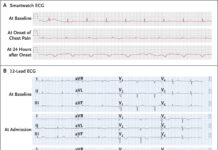Case of ulceroglandular tularemia
Tularemia is a rare infectious disease which is also referred to as rabbit fever or deer fly fever. The disease typically affects the skin, lymph nodes, eyes and lungs. The disease is mainly found in rabbits, deers and rodents. However, it can also affect domestic animals, such as, dogs, cats and hamsters. This article describes the case of a 5-year-old girl who presented to the emergency department with painful swelling on both sides of her lower abdomen. The painful swelling appeared 4 weeks ago. Doctors diagnosed her with ulceroglandular tularemia, a type of tularemia.
According to the child’s parents, she was regularly in contact with pets, including both a cat and dog in the last few days. Her parents further stated that 6 weeks before she had presented to the emergency, her parents noticed a tick buried in her umbilicus and removed it using a tweezer. However, despite removing the tick, 5 days later she developed a swelling and redness around the umbilicus. Other symptoms included fever, loss of appetite and fatigue. The symptoms subsided after 4 days.
At the time the patient presented to the emergency, examination showed marked inguinal lymphadenopathy on both sides. Doctors suspected ulceroglandular tularemia and started the patient on oral ciprofloxacin.
The diagnosis was confirmed with serological testing.
Two weeks after the treatment was completed, there was marked reduction in the lymphadenopathy. The swelling resolved completely after an additional 2 weeks. The signs of symptoms of the infectious disease vary based on how the bacteria enter the body. The symptoms can be mild to life-threatening. All forms of disease are accompanied with high fever. Ulceroglandular tuleremia is a common form of tuleremia that occurs either after handing of an infected animal, tick or deer fly bite. At the site the bacteria enter the body, a skin ulcer appears and is accompanied with symptoms of swelling and regional lymph glands around the armpit or groin.
References
Ulceroglandular Tularemia https://www.nejm.org/doi/full/10.1056/NEJMicm2031676




